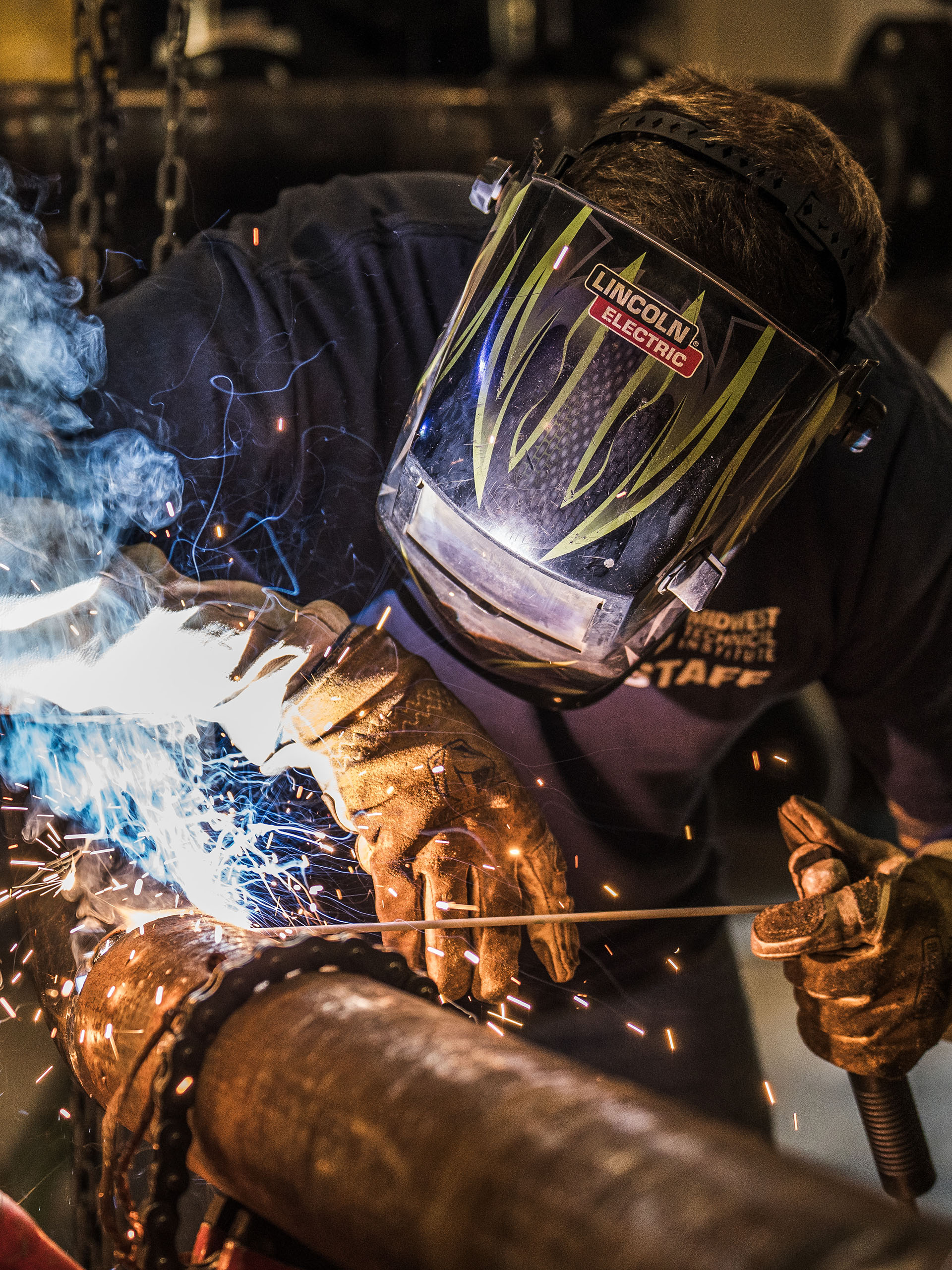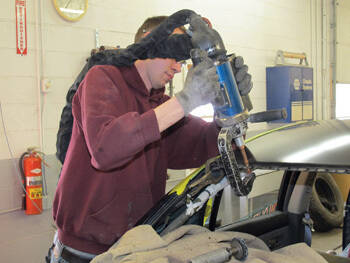Most frequent weld defects solved by Belgrade Welding experts
All Concerning Welding: Trick Insights Into Techniques and Finest Practices for Success
Welding encompasses a selection of methods, each matched for certain materials and applications. Comprehending these approaches, such as GMAW, SMAW, and TIG, is crucial for accomplishing optimal outcomes. Additionally, the appropriate equipment and safety techniques can not be neglected. As prep work and troubleshooting play critical functions in the welding procedure, understanding these components can significantly improve the quality of the end product. What are the crucial aspects that assure an effective weld?
Comprehending Different Welding Techniques
Welding methods incorporate a range of approaches, each matched to specific applications and materials. Amongst one of the most common techniques are Gas Steel Arc Welding (GMAW), Shielded Steel Arc Welding (SMAW), and Tungsten Inert Gas Welding (TIG) GMAW, also understood as MIG welding, is preferred for its rate and flexibility, making it ideal for slim materials. SMAW, or stick welding, is favored for its simpleness and performance in exterior settings, specifically with thicker steels. TIG welding offers accuracy and control, making it appropriate for intricate job and non-ferrous steels (Welding). Each technique has its one-of-a-kind advantages and considerations, enabling welders to select the very best method based on the project's demands, material kind, and wanted outcomes. Understanding these methods is important for successful welding
Necessary Welding Tools and Devices
While various welding strategies call for particular abilities, the appropriate devices and devices are similarly essential for attaining high quality results. Essential welding equipment includes welding machines, which vary depending upon the strategy-- such as MIG, TIG, or stick welding. Safety gear, including headgears, aprons, and handwear covers, warranties security and comfort throughout the procedure. Furthermore, clamps and fixtures assist safeguard materials in position, ensuring accuracy in welds. Consumables like welding poles, cord, and shielding gas are likewise important elements that affect the top quality of the weld. Additionally, tools such as mills and cutters assist in surface area preparation and post-weld completing, adding to a professional result. Investing in top quality devices eventually enhances the performance and performance of welding projects.
Security Practices in Welding
Proper security practices are necessary in the welding industry to protect workers from prospective dangers. Welders have to put on ideal individual safety tools (PPE), consisting of headgears with appropriate shading, handwear covers, and flame-resistant clothing. Adequate air flow is essential to reduce exposure to harmful fumes and gases generated during the welding procedure. Furthermore, workers ought to be learnt the correct handling of welding devices to protect against crashes. Fire safety and security procedures, such as keeping flammable products away from the welding location and having fire extinguishers conveniently offered, are required. Routine assessments of devices and offices can assist identify prospective hazards prior to they cause mishaps. By adhering to these safety methods, welders can create a more secure working setting and minimize threats linked with their trade.
Readying Materials for Welding
Preparing products for welding is a crucial step that considerably influences the top quality and integrity of the last item (Welding). Correct prep work involves cleansing the surfaces to remove contaminants such as corrosion, dirt, and oil, which can endanger the weld. Methods such as grinding, fining sand, or making use of solvents are frequently employed to accomplish a tidy surface area. In addition, making sure that the products mesh well is necessary; spaces can lead to weak welds. It's additionally important to take into consideration the alignment and positioning of the parts, as this will certainly influence the ease of welding and the final result. Selecting the appropriate filler material and making sure compatibility with the base metals is necessary for attaining solid, resilient welds.
Tips for Achieving High-Quality Welds
Achieving premium welds needs interest to detail and adherence to best practices throughout the welding procedure. Correct joint preparation is vital, making sure surface areas are free and clean from contaminants. Selecting the proper filler product and welding method based on the base steels is critical for perfect bonding. Preserving constant travel rate and angle while welding can protect against defects and advertise harmony. In addition, regulating warmth input is crucial; excessive heat can lead to bending and damaged joints. Routinely checking the welds during the process allows for instant changes if needed. Utilizing appropriate post-weld therapies, such as cleansing and stress alleviation, can enhance the sturdiness and integrity of the weld, inevitably making sure an effective outcome.
Fixing Usual Welding Issues
Welding typically presents challenges that can impact the quality and stability of the last item. Typical problems such as porosity, irregular weld grains, and getting too hot can develop, each calling for specific fixing strategies. Understanding these issues is essential for welders to enhance their abilities and attain perfect outcomes.
Porosity Problems Discussed
Porosity can typically be ignored, it stays an essential concern in welding that can endanger the stability of a finished product. Porosity describes the existence of little gas pockets within the weld bead, which can damage the joint and lead to early failure. This trouble generally occurs from contaminants, wetness, or inappropriate protecting gas coverage throughout the welding procedure. To reduce porosity, welders ought to confirm that the base materials are clean and dry, make use of ideal protecting gases, and preserve constant welding criteria. Routinely inspecting the tools and setting can likewise help recognize possible problems before they show up in the weld. Resolving porosity properly is necessary for achieving solid, long lasting welds that satisfy quality requirements.

Inconsistent Weld Beads
Inconsistent weld grains can greatly impact the high quality and toughness of a completed product. Different elements add to this problem, consisting of inappropriate traveling rate, inaccurate amperage setups, and inconsistent electrode angles. When the welder relocates as well promptly, a grain might show up narrow and do not have penetration, while moving as well slowly can trigger too much buildup. In addition, making use of the wrong amperage can cause either undercutting or too much spatter, both of which concession weld integrity. The welder's technique, such as inconsistent lantern movement, can likewise result in irregular bead appearance. To reduce these problems, welders should concentrate on maintaining consistent, regulated movements and ensuring appropriate devices settings to attain uniformity in their welds. Uniformity is vital to accomplishing solid and trusted welds.
Getting Too Hot and Bending Issues
Extreme warmth throughout the welding procedure can bring about considerable overheating and buckling problems, influencing the architectural honesty of the work surface. These troubles usually materialize as distortion, which can compromise alignment and fit-up, making additional setting up challenging. Elements adding to overheating consist of the option of welding criteria, such as voltage and more info take a trip speed, as well as the type of product being bonded. To minimize these issues, welders ought to preserve constant traveling rate and proper heat input while keeping an eye on the work surface temperature. Furthermore, pre-heating or post-weld heat therapy can assist alleviate tensions caused by rapid air conditioning - Fabrication. Normal examination and adherence to best methods are essential in preventing overheating and making certain the longevity and integrity of welded frameworks
Often Asked Questions
What Are the Job Opportunities in the Welding Industry?
The welding market offers diverse profession chances, including settings as welders, engineers, examiners, and teachers. Experts can function in manufacturing, construction, aerospace, and automobile industries, profiting from strong need and competitive wages in different duties.
Just How Can I Enhance My Welding Rate Without Compromising Top Quality?
To enhance welding rate without compromising top quality, one ought to practice efficient techniques, preserve equipment, maximize settings, and improve hand-eye control. Routine training and looking for feedback can likewise substantially add to attaining much faster, top notch welds.
What Accreditations Are Available for Welders?
Numerous certifications exist for welders, consisting of those from the American Welding Society (AWS), the National Facility for Building And Construction Education and Research (NCCER), and numerous industry-specific companies. These credentials boost employability and show ability proficiency.
Exactly How Does Welding Influence the Features of Metals?
Welding affects the properties of steels by altering their microstructure, which can result in modifications in hardness, ductility, and strength. Heat input and cooling rates throughout the process greatly affect these material attributes.
Can I Weld Dissimilar Metals Together?
